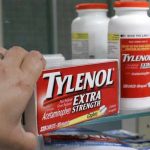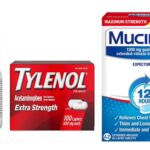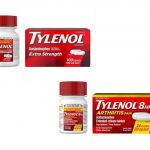What Happens If You Accidentally Took 2000 mg Of Tylenol At Once?

What is Tylenol?
Tylenol also known as acetaminophen is a medication that relieves mild-to-moderate pain, headache, and fever. You can use acetaminophen to relieve mild or moderate pain. This is usually pain from colds, sore throats, headaches, body or muscle aches, menstrual cramps, arthritis, or toothaches. You can also use it to reduce fever.
It’s not fully known how acetaminophen works. It doesn’t reduce swelling or inflammation. Instead, it’s thought that it blocks the release of certain chemicals in your brain that signal the sensation of pain.
How should I take Tylenol?
Take Tylenol exactly as directed on the label, or as prescribed by your doctor. An overdose can damage your liver or cause death.
Acetaminophen comes in many different forms such as capsules, liquid, chewable or disintegrating tablets, and dissolving powders or granules. Read and carefully follow any Instructions for Use provided with your medicine. Ask your doctor or pharmacist if you need help.
• Adults and teenagers at least 12 years old: Do not take more than 1000 milligrams (mg) at one time or more than 4000 mg in 24 hours.
• Children younger than 12 years old: Do not take more than 5 doses of children’s formula acetaminophen in 24 hours.
Do not give extra-strength acetaminophen to a child younger than 12 years old without medical advice.
A child’s dose is based on age and weight. Carefully follow the dosing instructions provided with acetaminophen. Ask a doctor before giving this medicine to a child younger than 2 years.
Tylenol made for infants comes with its own medicine dropper or oral syringe. Measuring with the wrong device may cause an overdose. Use only the provided dosing device provided to measure an infant’s dose.
Liquid Tylenol made for infants comes with its own medicine dropper or oral syringe. Measuring with the wrong device may cause an overdose. Use only the provided dosing device provided to measure an infant’s dose.
Acetaminophen made for infants is available in two different dose concentrations, and each concentration comes with its own medicine dropper or oral syringe. These dosing devices are not equal between the different concentrations. Using the wrong device may cause you to give your child an overdose of acetaminophen. Never mix and match dosing devices between infant formulations of acetaminophen.
You may need to shake the liquid before each use. Follow the directions on the medicine label.
The chewable tablet must be chewed thoroughly before you swallow it.
Make sure your hands are dry when handling the acetaminophen disintegrating tablet. Place the tablet on your tongue. It will begin to dissolve right away. Do not swallow the tablet whole. Allow it to dissolve in your mouth without chewing.
To use the acetaminophen effervescent granules, dissolve one packet of the granules in at least 4 ounces of water. Stir this mixture and drink all of it right away. To make sure you get the entire dose, add a little more water to the same glass, swirl gently and drink right away.
The oral powder should be placed directly on the tongue and swallowed.
Stop taking this medicine and call your doctor if:
• you still have a sore throat after 2 days of use;
• you still have a fever after 3 days of use;
• you still have pain after 7 days of use (or 5 days if treating a child);
• you have a skin rash, ongoing headache, nausea, vomiting, redness or swelling; or
• your symptoms get worse, or if you have any new symptoms.
Taking acetaminophen may cause false results with certain blood glucose monitors. If you have diabetes, ask your doctor about the best way to monitor your blood sugar levels while using this medicine.
What Happens If You Accidentally Took 2000 mg Of Tylenol At Once?
Accidentally taking 2000 mg of Tylenol at once can result in acetaminophen poisoning, due to excess amount of the medication in your body. Acetaminophen poisoning is the second most common cause of liver transplantation worldwide and the most common cause of liver transplantation in the US. It is responsible for 56,000 emergency department visits, 2,600 hospitalizations, and 500 deaths per year in the United States. Fifty percent of these are unintentional overdoses.
Signs of acetaminophen poisoning can take up to 12 hours to appear. Symptoms and side effects may include:
• Abdominal pain
• Irritability
• Generalized weakness
• Loss of appetite
• Jaundice (yellow appearance of skin and eyes)
• Diarrhea
• Nausea
• Vomiting
• Convulsions
• Coma
If you accidentally took 2000 mg of Tylenol at once call your doctor immediately or call the Poison Control Center at 1-800-222-1222. Timing is a vital factor in the treatment of acetaminophen poisoning, and therefore doctors attempt to begin treatment of acetaminophen overdose within eight hours of ingestion in order to achieve the best possible outcome for the patient. The majority of patients survive acetaminophen poisoning with supportive care such as intravenous fluids and anti-nausea medication, activated charcoal, if used within one hour after ingestion, and antidotal therapy, including N-acetylcysteine (Acetadote®, Mucomyst®).
For patients who fail the above therapies and develop liver failure, liver transplantation may be the only treatment option. Doctors will determine if transplantation is necessary if the above tests are significantly abnormal and the patient has developed hepatic encephalopathy, a disorder of the brain caused by a dysfunctional liver.
How to Prevent Tylenol Overdose?
Ask your healthcare provider or a pharmacist if you are not sure about any of the following:
Read labels carefully. Read the labels of all the medicines you take. If your medicine contains acetaminophen, it will be listed in the active ingredients section. Acetaminophen may be listed on the label as APAP, Acetaminoph, Acetaminop, Acetamin, or Acetam. Check carefully to see if the acetaminophen is a regular or extended-release form.
Take the correct dose. Make sure you take the right amount and wait the right number of hours between doses. Never take more than the label says to take. If the medicine came with a device such as a spoon or dropper, use it to measure your medicine. If you need to give acetaminophen to your child, check the label to find out how much to give. The amount and timing will be based on your child’s age and weight.
Do not take more than 1 type of acetaminophen at a time. Many combination medicines contain acetaminophen. Make sure the total dose of acetaminophen you take is not more than 4,000 milligrams (4 grams) in 1 day. Check other medicines to see if they contain acetaminophen. Do not take these medicines together with acetaminophen. The combined amount of acetaminophen may be too much.
Do not take acetaminophen for too many days in a row. Do not take acetaminophen for more than 10 days to treat pain, unless your healthcare provider tells you to. Do not take acetaminophen for more than 3 days to treat a fever, unless your healthcare provider tells you to. Your pain or fever may need to be treated another way if it lasts longer than a few days.





